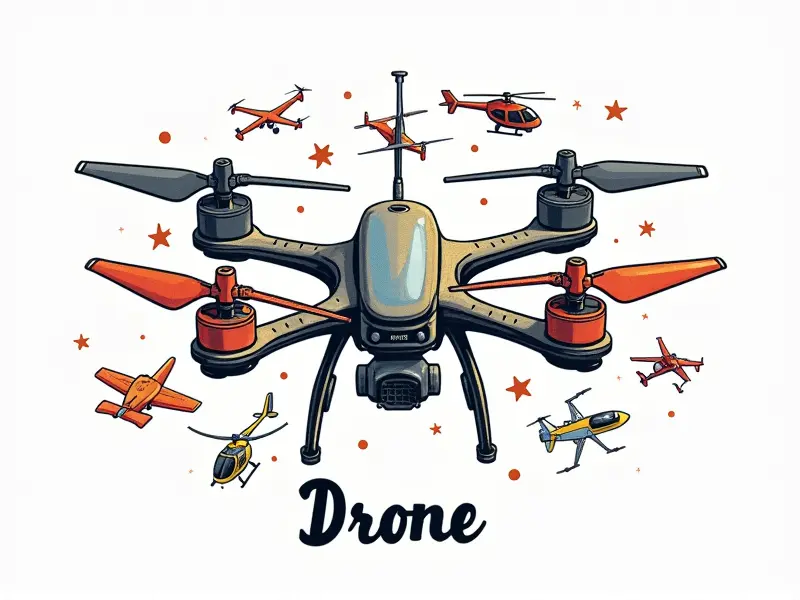How do I start my FPV career?

Beginner's Guide to FPV Racing
Welcome to the exhilarating world of FPV (First Person View) drone racing! If you're new to this high-speed hobby and are eager to get started but don't know where to begin, this guide is for you. We'll walk you through everything from choosing your first FPV drone to mastering basic flight techniques.
First Steps in FPV Drone Racing
The journey into the world of FPV racing begins with understanding what it entails and why so many enthusiasts are drawn to this thrilling activity. FPV racing involves flying small, agile drones equipped with cameras that transmit a live video feed directly to goggles worn by the pilot.
Getting Started with FPV Drones
To get started in FPV drone racing, you'll need to gather the right equipment and learn some basic skills. Here’s how:
- Select a Suitable Drone: Look for drones designed specifically for FPV racing, such as the TBS Discovery or the Runcam Swift 2.
- Purchase Flight Gear: Invest in goggles that provide clear video transmission and comfortable fit. Popular choices include the FatShark Dominator HD+ and the VooDoo X.
- Learn Basic Controls: Spend time understanding how to control your drone, including throttle, yaw, pitch, and roll.
Essential Gear for New FPV Pilots
Before you can take off on your first flight, ensure you have the necessary gear:
- FPV Drone: Choose a drone that is lightweight and designed for racing.
- FPV Goggles: High-quality goggles are crucial for an immersive experience.
- Radio Transmitter (TX): A transmitter with at least 4 channels to control your drone's flight.
- Battery Pack: Multiple batteries will allow you to fly longer without needing recharges.
- FPV Camera: A high-definition camera that can transmit clear video feed.
Learn FPV Racing from Scratch
If you're completely new to FPV racing, there are several steps you should follow to ensure a smooth learning curve:
- Understand the Basics: Familiarize yourself with drone components and their functions.
- Practice Flight Techniques: Start in an open area away from obstacles. Focus on mastering basic maneuvers like hovering, turning, and flying straight lines.
- Join a Community: Engage with experienced pilots through forums or local clubs to learn tips and tricks.
Tips for Starting Your FPV Journey
Here are some valuable tips to help you get off the ground:
- Start Slowly: Begin with simple maneuvers before attempting complex ones.
- Safety First: Always wear protective gear like helmets and gloves. Fly in safe areas away from people and property.
- Stay Informed: Follow FPV racing news, updates on new technology, and safety regulations.
FPV Drone Basics for Novices
Understanding the fundamentals of FPV drones is crucial. Key components include:
- Flybarless Controller (FBL): This stabilizes your drone's flight and enhances maneuverability.
- Battery Management System (BMS): Ensures that your batteries are charged safely and efficiently.
- Power Distribution Board (PDB): Distributes power to all components of the drone.
How to Enter the World of FPV
To enter the world of FPV racing, follow these steps:
- Research and Plan: Learn about different types of drones, their capabilities, and which one suits your needs.
- Budget Wisely: Determine how much you can spend on gear and stick to it. Quality is important but so is affordability.
- Practice Regularly: Consistent practice will help you improve your skills and confidence in the air.
Step-by-Step FPV Drone Setup for Beginners
Setting up an FPV drone can seem daunting at first, but it's easier with a clear plan. Here’s how to do it:
- Assemble the Frame: Start by mounting your flight controller and power distribution board.
- Install Motors and Props: Attach motors to the frame and secure propellers.
- Connect Electronics: Wire up ESCs, receiver, battery, and camera.
- Calibrate Components: Ensure all components are calibrated correctly for optimal performance.
Essential Gear for Starting FPV Drone Racing
To ensure you have everything needed to start racing, consider these essentials:
- FPV Camera and Antenna: A high-quality camera with a reliable antenna setup is crucial.
- Voltage Regulator (VRx): This regulates power from the battery to other components.
- Telemetry Module: Provides real-time data on drone performance and health.
- FPV Monitor: Useful for setting up your system or troubleshooting issues.
Building Your First FPV Race Drone
Constructing an FPV race drone from scratch can be a rewarding experience. Here’s what you need to know:
- Select Components: Choose lightweight and durable parts that are suited for high-speed racing.
- Assemble the Frame: Carefully assemble your frame, ensuring all components fit securely.
- Install Electronics: Connect ESCs, motors, receiver, battery management system, and camera.
- Test Your Setup: Before flying outdoors, test your drone in a controlled environment to ensure everything works as expected.
Conclusion
Starting an FPV racing career is an exciting journey filled with learning opportunities and thrilling experiences. By following this guide, you'll be well-equipped to take the first steps towards becoming a skilled FPV racer. Remember, patience and practice are key to mastering this exhilarating hobby.

